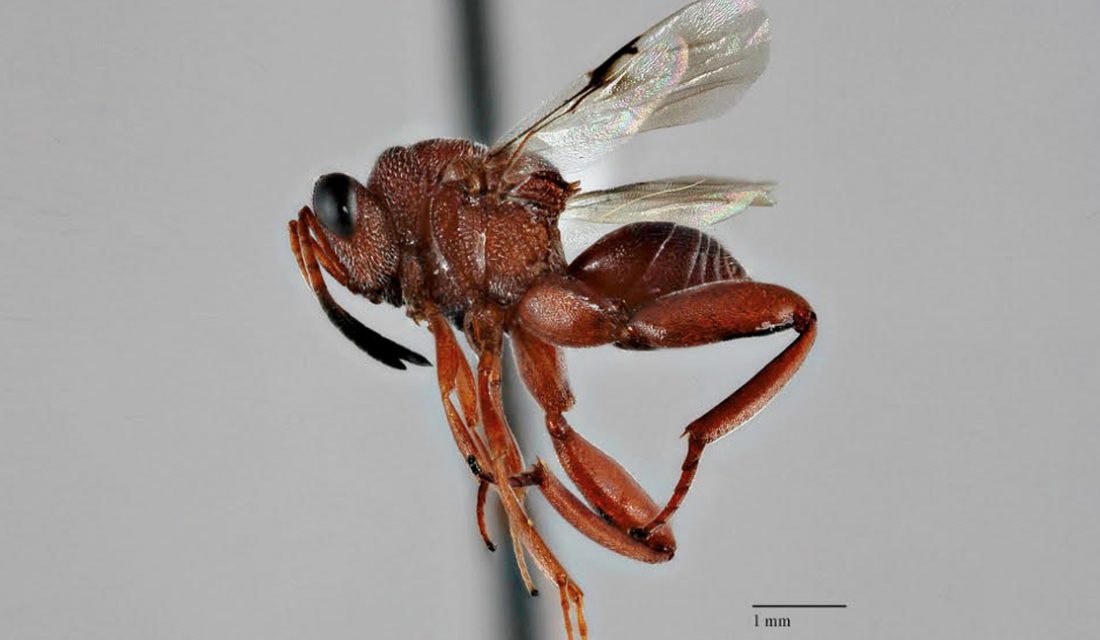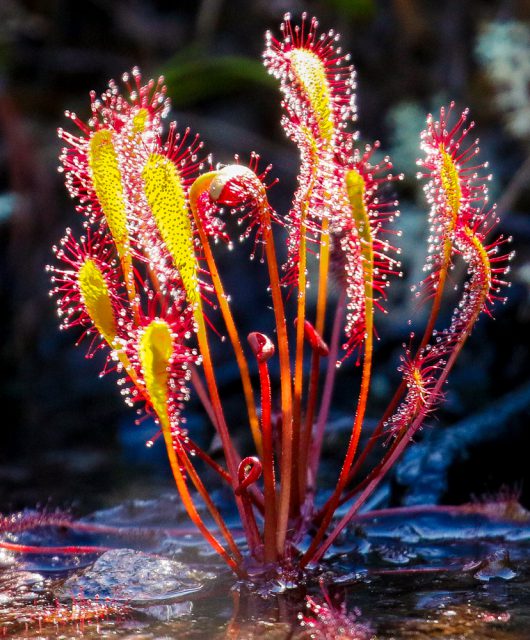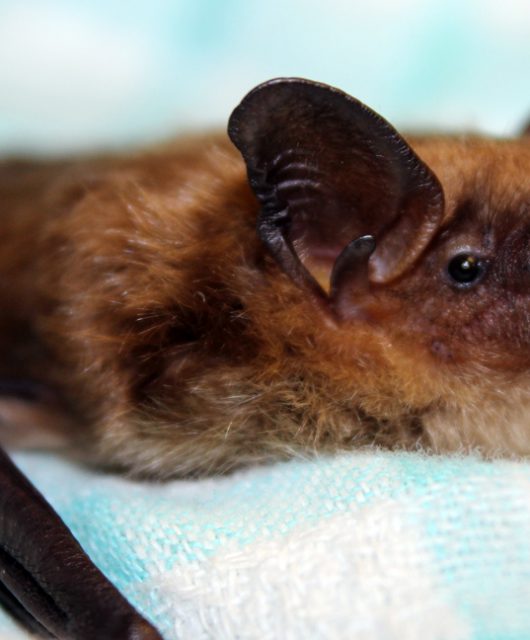My name is Jones and I am a Canadian Wildlife Federation summer student, working as a Native Prairie Insect Diversity Field Technician at the Royal Saskatchewan Museum, supervised by Dr. Cory Sheffield. This blog describes my day to day duties in this exciting opportunity to learn about insects of the wild prairies.
July 5th – Setting Up Blue Vane and Malaise Traps in Avonlea
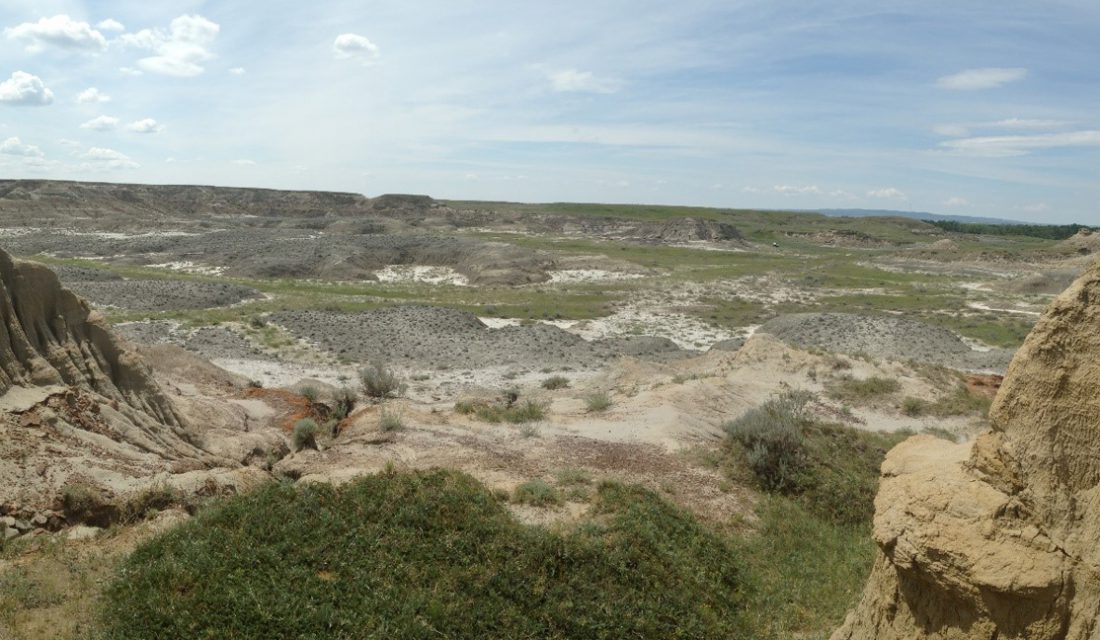
On July 5th we drove to a pasture East of Avonlea to set up two types of insect traps. Inside this pasture is a large canyon of badlands terrain with soft sandy ground and large rock formations. It was a new experience for me seeing a landscape like this, and I didn’t expect to see anything like it in an otherwise normal-looking Saskatchewan pasture.
We observed that a few species of bees and wasps that had made a nest in the side of these rocks and dirt mounds. Some bees like the Leafcutter Bee (Megachile rotundata) that were nesting in small hillside holes; these holes were probably previously inhabited by the Digger Bee (Anthophora occidentalis).
A few of the bee species I caught in this badlands were completely covered in pollen and were very eager to fly off to another flower. One bee I managed to catch stained my fingertips yellow because it was covered in pollen! This reminded me what an important role bees, wasps and other pollinators play in fertilizing their respective flowers and keeping the plant ecosystem healthy.

July 6th – Travelling the Wascana Trails and Craven Roadside
The next day involved more net collecting after travelling North of Regina to the park and hiking area of Wascana Trails. There was a lot of biodiversity in this area including Red-winged Blackbirds and Barn Swallows, both of which really didn’t appreciate us waving nets near their nests. We spent most of the day there collecting insects, but eventually made our way to a field outside Craven. There was a patch of sweet clover here where we caught plenty of Bumblebees as well as wasps and other bees.
July 7th – Discovering a New Species in Canada
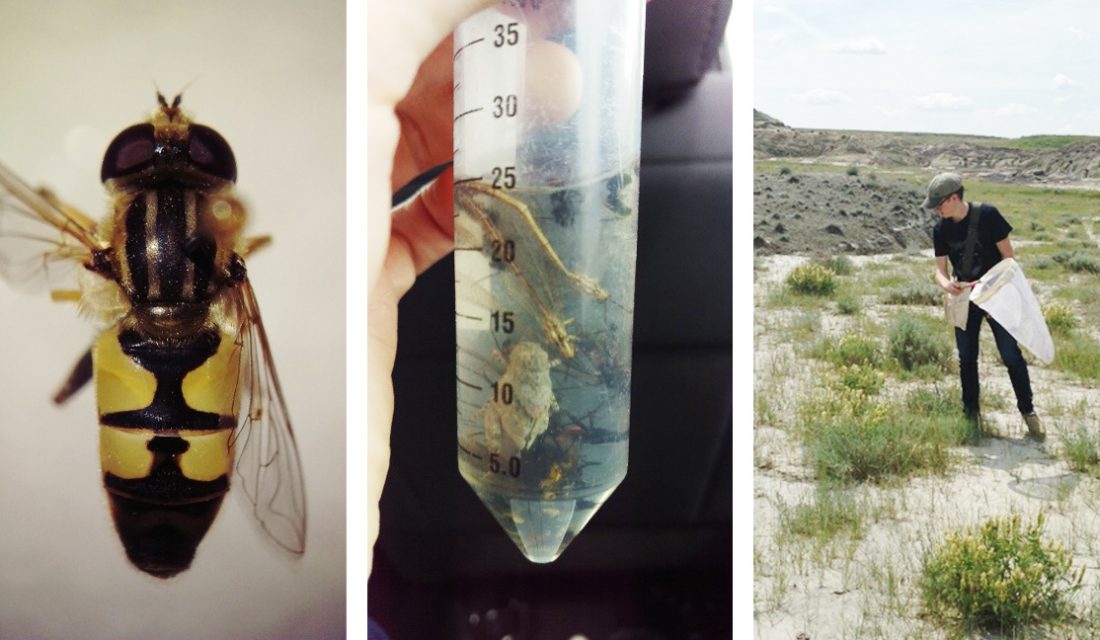
On Friday we went back to Avonlea to collect the blue vane traps and Malaise traps as well as do some sweep netting. It was extremely hot so we didn’t stay too long, and one of the Malaise traps appeared to have fallen over shortly after we first set it up, so we didn’t get anything from that. The other Malaise trap, however, collected a good amount of bees, beetles, and a chalcid wasp that is a new record in all of Canada (picture below) as a parasite of Antlion larvae! It’s fantastic to have been part of this discovery. A new species being found in Canada while casually collecting insects shows how vast the Saskatchewan biodiversity is, and how much more there is to learn about the interactions between species within it.
In the coming weeks we should be collecting insects at other PFRA pastures, and it will be interesting to see whether any different species are present.
Canadian Wildlife Federation is contributing to Dr. Sheffield’s work because little is known about insect diversity in the prairies and the knowledge generated through this project will help us to better conserve these rare ecosystems.
